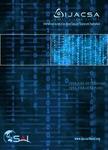版权所有:内蒙古大学图书馆 技术提供:维普资讯• 智图
内蒙古自治区呼和浩特市赛罕区大学西街235号 邮编: 010021

作者机构:Texas A&M Int Univ Sch Engn Laredo TX 78041 USA
出 版 物:《INTERNATIONAL JOURNAL OF ADVANCED COMPUTER SCIENCE AND APPLICATIONS》 (Intl. J. Adv. Comput. Sci. Appl.)
年 卷 期:2020年第11卷第8期
页 面:9-18页
核心收录:
基 金:National Aeronautics and Space Administration, NASA University of New Mexico, UNM Texas A and M International University, TAMIU
主 题:NASA Swarmathon competition swarm robotics search algorithm autonomous Robot Operating System (ROS) NASA space exploration simulation autonomous robot swarm collaborative robots autonomous behavior cooperative robots swarmies L-Shaped search GitHub
摘 要:This paper focuses on designing a search algorithm that the DustySWARM team used in the 2019 NASA Swarmathon competition. The developed search algorithm will be implemented and tested on multiple rovers, a.k.a. Swarmies or Swarm Robots. Swarmies are compact rovers, designed by NASA to mimic Ants behavior and perform an autonomous search for simulated Mars resources. This effort aimed to assist NASA s mission to explore the space and discover new resources on the Moon and Mars. NASA s going-on project has the goal to send robots that explore and collect resources for analysis before sending Astronauts, as the swarm option is safer and more affordable. All rovers must utilize the exact algorithm and collaborate and cooperate to find all available resources in their search path and retrieve them to the space station location. Additionally, swarmies will autonomously search while avoiding obstacles and mapping the surrounding environment for future missions. This algorithm allows a swarm of six robots to search an unknown area for simulated resources called AprilTags (cubes with QR codes). The code was developed using C/C++, GitHub, and Robotics Operation Systems (ROS) and tested by utilizing the Gazebo Simulation environment and by running physical trials on the swarmies. The team analyzed a few algorithms from previous years and other researchers then developed the Radiating L-Shape Search (RLS) Algorithm. This paper will summarize the algorithm design, code development, and trial results that were provided to the NASA Space Exploration Engineering team.